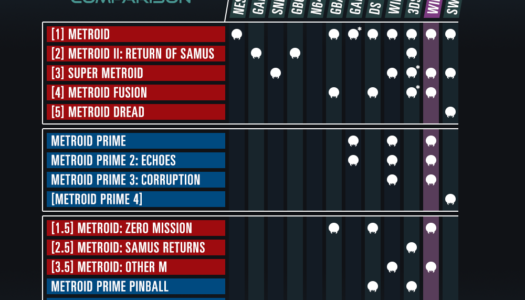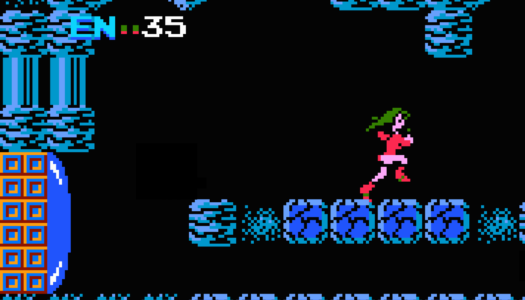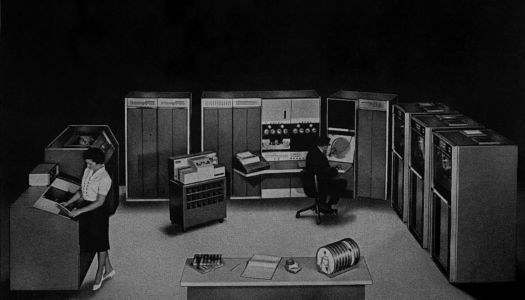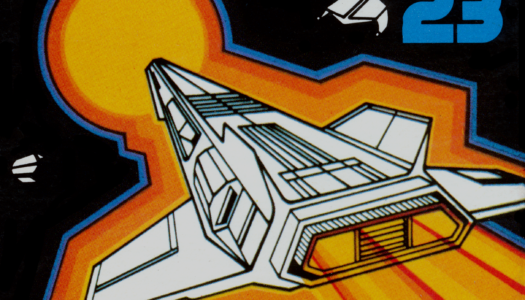Swarm

Publisher: UTV Ignition Entertainment / Developer: Hothead Games / Platform: PC, PSN, XBLA
In most games, you only control one person at a time, or in other cases a group of people in some sort of strategy-type setting. In Swarm, however, you control up to 50 little bug-eyed, blue-skinned aliens (called “Swarmites”) at one time, and you’re expected to navigate minefields, thin walkways perched over a river of lava, and even electrified fences. Death comes swiftly and often, but Swarm is less about who dies and more about how you use those that don’t.
Swarm starts off with an animated cutscene that shows a glowing blue asteroid (or egg, or fetus, or… something) crash-landing on an unknown planet covered in molten lava, remnants of what look like rusted, sinister machines and lots and lots of explosives. And that’s about it. That’s all the backstory there is to Swarm, and really that’s all it needs. Once the first level begins, 50 little Swarmites are birthed from some kind of… umbilical cord attached to what the game calls “Mommy”, the egg-asteroid thing from the intro. The entire group of Swarmites are then under your complete control. The Swarmites are all controlled with the left thumbstick, and all move at the same time. While this sounds like it would be an encumbrance, the way the Swarmites move around actually works better than you’d think.
The Swarmites all move as one big unit, and can be commanded to huddle together or spread out with the two triggers, as well as stack atop one another and move as one giant (albeit easily-toppled) column. Jumping works smoothly as well. While standing still, the whole group of Swarmites all jump at the same time whenever the A button is pressed. When moving, however, they jump as a wave. While this took a little bit to get used to, it really helps during some of the longer jumps in the game, since each of the Swarmites all jump and land at the same spot.
Other than that, the Swarmites can do a short ramming attack, a running jump (this takes a little while to get used to, moreso than the other gameplay mechanics), and can also pick up small objects en masse and throw them. However, much to my disappointment, this is only ever used in the second level where you find a pile of grenades and chuck them around. This was one of the funniest moments in the game for me, both because of the awkward sight of seeing a pile of small blue creatures all carrying grenades larger than themselves, and also due to the fact that a few of the Swarmites will actually pick up each other and throw them.
Humor is one of the things Swarm really gets right. Despite the game’s dark and intimidating setting, as well as the fact that all of the Swarmites’ deaths are extremely gruesome and bloody, you can’t help but crack up every time a Swarmite steps on a bear trap, or an explosion sends half your team whizzing past the camera, some even splattering against it. There are times when some unexpected explosion destroys most of your swarm, or a firefly (literally a fly made out of fire and lava) scoops up and eats them that just make you yell “oh, shit!” and start laughing your ass off, since it came so quickly, so unexpectedly, and they all die in such brutal, over-the-top gory ways.
It’s unfortunate, then, that the way Swarm handles the survival aspect is so far in the opposite direction from what you’d expect the game to be about that it quickly starts to become more tedious and frustrating than fun. Swarm isn’t about getting to the end of the level with as much of your swarm intact as possible; the game in fact gives you points for killing off some of the little buggers. Swarm is actually really about getting as high a score as possible before the end of the level. This would be okay if the requirements to pass some of the levels weren’t so high. The difficulty in Swarm varies so greatly from level to level that as soon as you start having fun the game slaps you in the face with the realization that the level is over and you haven’t even attained half of the score requirement.
In Swarm, you have your overall score, as well as a separate score attached to a combo meter. Every time you pass a checkpoint, pick up a score bubble thing, or a Swarmite dies, points are added to the combo score and the combo multiplier goes up. While this seems like a neat idea, it doesn’t work too well with the way Swarm is played. Ideally, you want to go through each level amassing the biggest score you can get in the largest combo you can put together along with the biggest multiplier. The largest problem here is that if your entire swarm is wiped out during this process (and while there are gooey blue pods you find that respawn a portion of your swarm, this is still entirely possible), you not only start back at the last checkpoint, but you do so with your combo score completely gone and your multiplier back at x1. This completely nullifies the purpose of a checkpoint, because while you’re restarting halfway through the level, you’re doing so with a gimped score and nine times out of ten this makes it impossible to complete the score requirement. While I think Swarm would have been significantly more enjoyable if there was more of an emphasis on survival and score was given a backseat, this would magnify another problem I had with the game: its length.
Swarm only has 12 levels, two of which are boss fights. While the levels themselves are really well laid out, and are fun to explore and find out the best path, it makes me think that the high score requirements were an attempt to artificially lengthen the game. Both boss fights require a specific number of DNA to be found (15 out of the total 50 for the first boss, and 30 for the last) in order to be unlocked. Five bits of DNA are hidden throughout each level, and while it may seem like a chore at first, they aren’t too ridiculously hidden and become more of a test of your skills with the swarm itself than a contrived egg hunt. The boss fights themselves are challenging and fun, the bosses themselves are both designed really well and they both provide a nice change of pace from the meat of the game. While I did find the first boss more challenging and interesting than the second, both are fun to watch and I would have loved to see more of them.
Swarm is an odd beast. The gameplay is tight and well-designed, the bosses are memorable, and the artistic design is fantastic. While some gamers may enjoy the high score requirements and score-centric game design, the overall game length is a rather large disappointment. Trying the same five-minute-long level over and over again only to barely scratch the surface of the score requirement starts to become grating, despite how much fun you could be having with the game if it was planned out a little better.

















